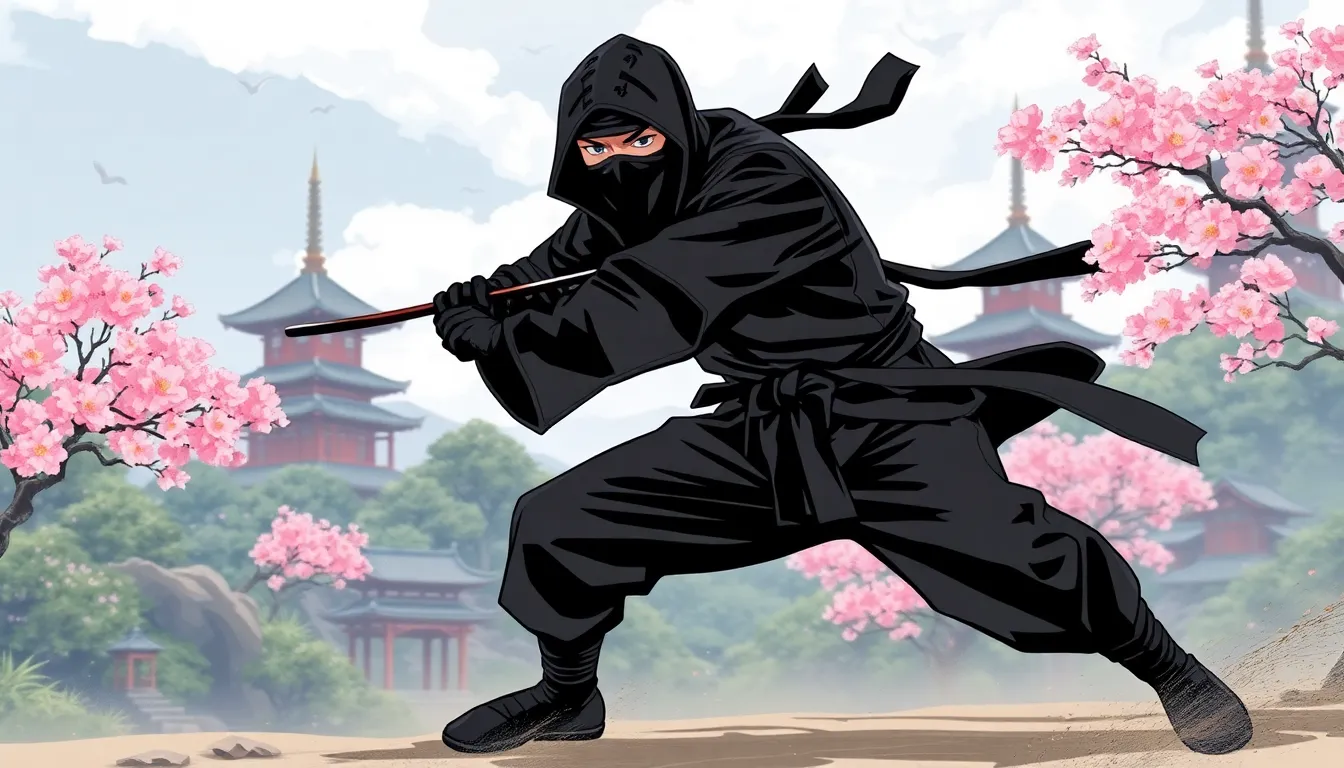Ninja video games have a unique charm that draws players into a world of stealth and skill. Imagine slipping silently through shadows, dispatching foes with a flick of your wrist, all while looking effortlessly cool. These games have captivated audiences for decades, blending action, strategy, and a sprinkle of ancient mystique.
Ninja Video Games
Ninja video games immerse players in a world rich with stealth, strategy, and combat. Players often step into the shoes of agile warriors, mastering techniques that emphasize precision and timing. Stealth mechanics facilitate avoiding detection, creating tension as players navigate complex environments. Missions frequently involve infiltration, espionage, and assassination, showcasing varied gameplay styles.
Classic franchises like “Ninja Gaiden” set the standard, combining fast-paced action with intricate level designs. “Tenchu” introduced players to a more methodical approach, focusing on strategy and planning. Recent titles, such as “Sekiro: Shadows Die Twice,” elevate the genre through challenging combat and immersive storytelling.
Graphics and sound design contribute significantly to the overall atmosphere. Visuals enhance the representation of ancient Japan and the weapons of the time, while sound effects amplify the experience, such as the swish of a katana. Player engagement often rises from the combination of these elements, leading to memorable gaming moments.
Ninja video games continue to evolve, presenting players with innovative mechanics and narratives. The appeal persists due to a blend of action and identity exploration. Players not only engage in thrilling gameplay but also embody a cultural icon steeped in history. The popularity of these games is evident through their loyal player base and critical acclaim, solidifying their place in video game history.
Popular Ninja Video Games

Ninja video games offer a thrilling combination of stealth, skill, and engaging action. Classic and modern titles showcase the genre’s diversity and evolution.
Classic Titles
“Ninja Gaiden” stands out as an iconic platforming action game, first released in the late 1980s. Players control Ryu Hayabusa, a skilled ninja tasked with avenging his father’s death. “Tenchu: Stealth Assassins” played a crucial role in popularizing stealth mechanics in the late 1990s, immersing players in a world of espionage and assassination. “Shinobi,” another classic from the 1980s, highlights intense action coupled with ninja lore. These titles established foundational gameplay elements that continue to influence the genre.
Modern Releases
“Sekiro: Shadows Die Twice” takes the ninja game experience to new heights, integrating challenging combat mechanics with a rich narrative set in 16th-century Japan. This title introduces an innovative posture system, emphasizing strategy over mere button-mashing. “Ghost of Tsushima” combines exploration, stunning visuals, and a strong story, allowing players to embrace the role of a samurai navigating a world influenced by ninja tactics. “Nioh” immerses players in a dark fantasy world, blending Japanese mythology and ninja combat. These modern releases expand the genre, captivating a new generation of players.
Game Mechanics and Features
Ninja video games offer engaging mechanics that enhance the player experience through stealth and combat.
Stealth Elements
Stealth defines the core of ninja gameplay. Players often rely on shadows and environmental features to avoid detection. Areas filled with obstacles and hiding spots allow for strategic movement. Engaging in missions frequently entails planning routes and timing actions carefully. Popular games in the genre, such as “Tenchu” and “Sekiro,” emphasize the importance of stealth, encouraging players to observe enemy patterns. Timing plays a crucial role, as sneaking undetected can lead to successful infiltrations. Techniques like distractions and silent takedowns elevate stealth, rewarding patience and skill.
Combat Techniques
Combat systems in ninja games exhibit depth and variety. Players perform fluid movements, such as dodges, parries, and counterattacks. Each title incorporates unique styles; for instance, “Ninja Gaiden” focuses on fast-paced action, while “Sekiro” demands precision in timing and strategy. Special abilities often enhance combat, like the use of ninjutsu in “Tenchu” or elemental attacks in “Nioh.” Mastery of combos and skillful execution leads to satisfying rewards in battles. Players face enemies that require different strategies, promoting experimentation with various techniques and abilities.
Cultural Impact of Ninja Video Games
Ninja video games have significantly influenced popular culture and the gaming landscape. Their unique portrayal of stealthy heroes captivates audiences, making them iconic figures in gaming.
Representation of Ninja Culture
Ninja culture in video games often emphasizes themes of honor and precision. Games depict ninjas as disciplined warriors, highlighting traditional values such as loyalty and respect. Titles like “Tenchu” incorporate historical elements, adding depth by exploring feudal Japan’s social structures. Players experience various aspects of ninja life, from stealthy infiltrations to tactical assassinations. Cultural symbols, such as shurikens and katanas, play integral roles, further connecting gameplay to authentic ninja lore. These representations help familiarize players with rich cultural narratives, promoting appreciation for Japanese heritage.
Influence on Gaming Industry
Ninja video games have shaped the gaming industry by introducing innovative mechanics and designs. The blend of stealth and action in these titles paved the way for other genres, influencing gameplay development across various platforms. Established franchises like “Ninja Gaiden” set benchmarks for combat systems, impacting game developers worldwide. Additionally, the success of modern titles such as “Sekiro: Shadows Die Twice” showcases the ongoing demand for challenging gameplay and immersive storytelling. This genre’s popularity encourages studios to invest in ninja-themed projects, driving creativity within the industry. Overall, the influence of ninja video games extends beyond entertainment, impacting game design trends and shaping player expectations.

